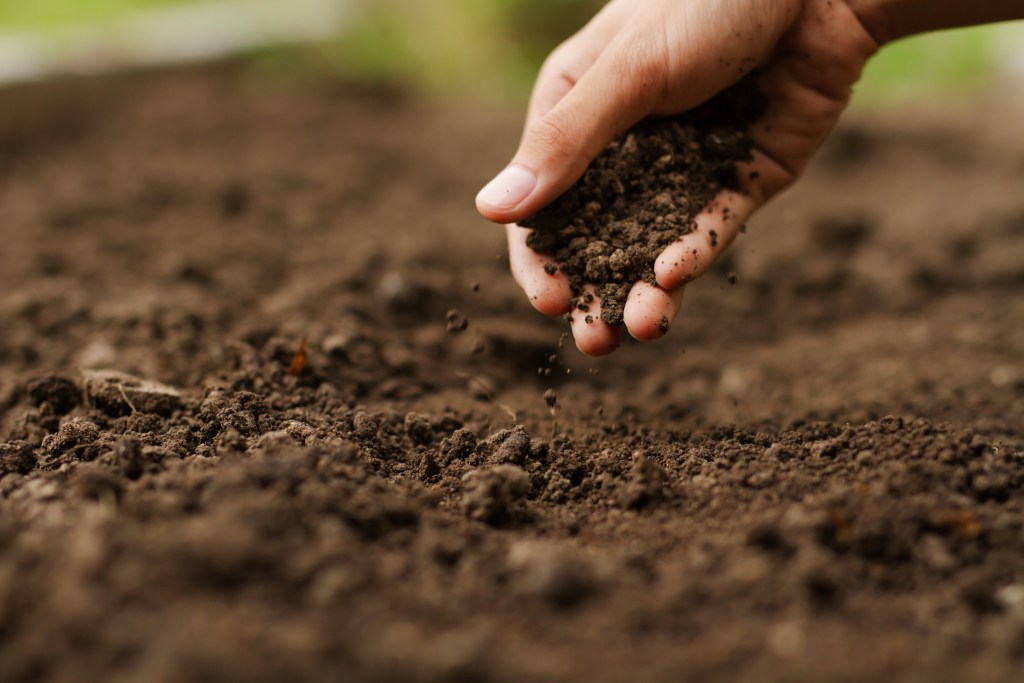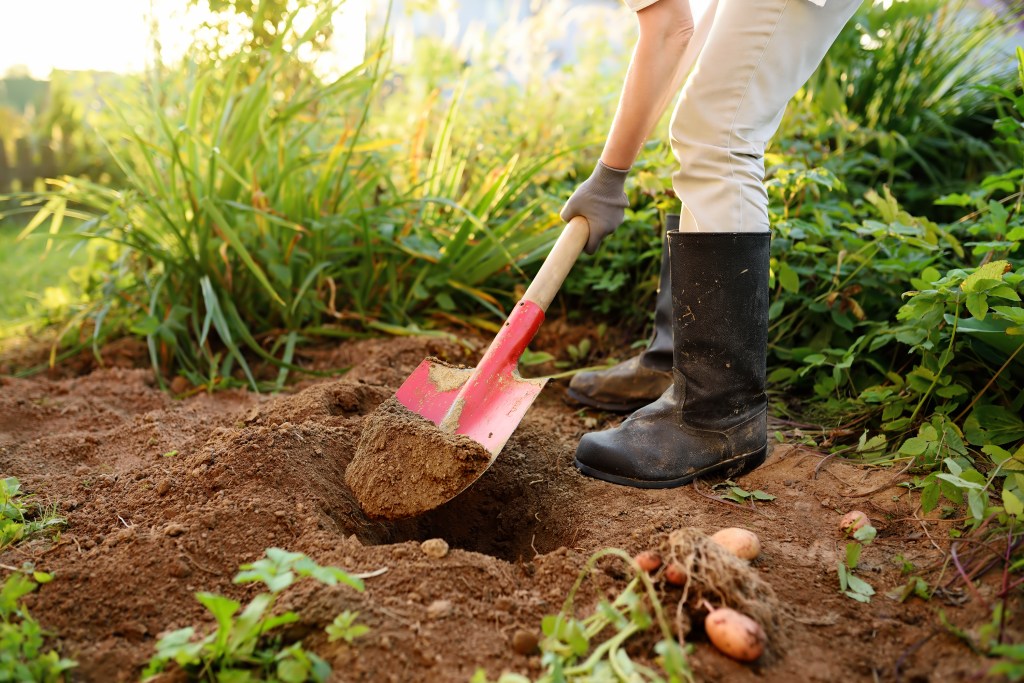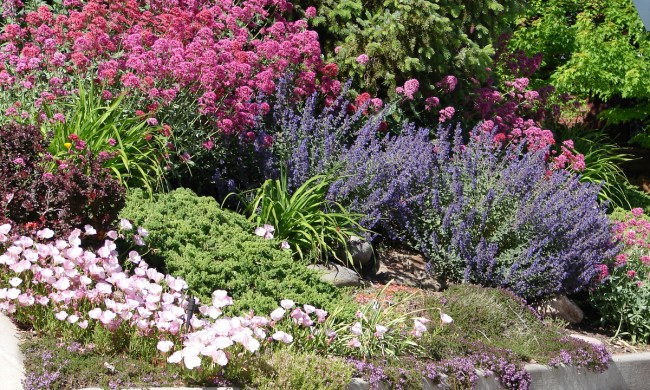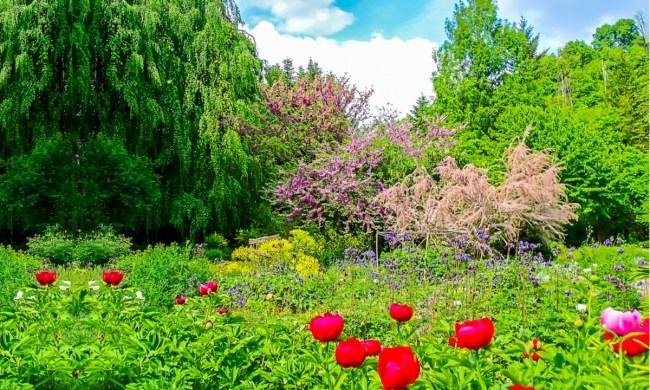Feed the soil, and your plants will thrive.
“Think of the soil as very much alive,” said Nancy Kreith, a horticulture educator from the University of Illinois Extension. “There’s a lot of living organisms in there and they feed off organic matter.”
Kreith coordinates South Suburban Cook County’s chapter of the Master Gardener Program. Within the program, Kreith teaches gardeners about soils, fertilizers, ornamental plants, and herbaceous plants.
Participants of the Master Gardener Program receive 60 hours of horticulture training in exchange for 60 hours of volunteer work in forest preserves, community gardens, and other projects. University of Illinois Extension assists school and community gardens through research-driven guidance and trained gardening experts.
Soil structure
The physical properties of soil play a crucial role in how home or community gardeners monitor soil health.
“Take a handful of soil, squeeze it, pinch it between your two fingers, and see how well it holds together,” Kreith said. “If it breaks apart easily, maybe it’s heavier in sand. If it’s clay-y [sic], it will stick, like Play-Doh.”
Each soil type—sand, clay, and silt—comes with benefits and shortcomings. Soils with high sand contents are lighter and offer great drainage at the risk of becoming too dry in warmer seasons. Sand soil also doesn’t hold nutrients the way clay soil does.
Clay-heavy soil, considered a heavy soil, holds water well but may introduce drainage issues or become too stiff for plants to thrive. Silt soil, lighter than clay but heavier than sand, offers great water retention and air circulation.

Gardeners can amend soil with compost or organic materials with a broad fork in order to improve soil texture. Soil structure can be easily damaged, however, so incorporate organic matter with limited disturbance in order to protect the integrity of the soil.
“You don’t want to till the soil too much, because you can really destroy the structure if you overdo it,” Kreith said. “You can also expose weed seeds that have been in the seed banks of the soil.”
Through exposing weed seeds, gardeners encourage unintentional growths that require additional maintenance and labor.
The ideal soil texture for most plants should feel loose, well-drained, and not compacted.
Water retention and drainage
Plants and their soil need water—but not too much. Soil should feel moist, without any standing water or puddles. Water drainage provides another physical attribute gardeners can study to assess soil quality.
“Dig a hole, fill it with water, see how well the drainage is,” Kreith said. “You want soil that drains well. You would hope that hole of water drains within a few hours. If it’s standing there for almost a day or more, then you know you have bad drainage.”
To remedy, opt for raised beds or amend the soil with organic matter. Always place plants based on their needs and soil type, instead of personal preference.
“If it’s a completely dry area, you want to put plants that will tolerate that,” Kreith said. “When you’re growing vegetables, there’s not much way around it. We know eggplant to be somewhat tolerant, whereas your root crops like well-drained, loose soil.”
For overly moist areas, planting native, flood-resistant plants—such as water hyssop or iris—can help absorb excess water. Research plants native to your region.
In order to improve water retention and drainage, adding organic material, like compost or straw, helps both regulate moisture and promote drainage, while adding nutrients. Gardeners can also use mulch on top of soil beds in order to promote better water retention.
“What helps really is putting a mulch on the soil, so you’re not constantly out there watering,” Kreith said. “And it’ll cool the soil off and will hold in moisture”
Adding mulch also helps keep down weeds, alleviating additional labor.
pH balance
“When your pH gets too high or too low, plants won’t be able to absorb all their essential nutrients,” Kreith said. “That’s when you might see those micronutrient deficiencies like iron and chlorosis.”
Chlorosis occurs when plants don’t receive the chlorophyl they need and start to yellow. Chlorosis can be caused by high alkaline soil, drainage issues, root issues, or nutrient deficiencies. Similarly, iron deficient plants start to yellow before slowly dying. Iron, like other essential nutrients, can’t be absorbed without optimal soil pH.
Before bringing home a new plant, be sure to research what pH is required for that specific plant to thrive. While many vegetables and ornamental plants thrive between the pH range of 6.5 to 7, this range isn’t always universal.
“There’s cases like blueberries, where they prefer a pH of like 5.5,” Kreith said. “So if you were trying to grow blueberries in this area, you would almost need a raised bed or a container and completely bring in your own soil, monitor for the pH, and amend that soil just specifically for those blueberries.”
Gardeners should use a soil test each year to determine soil pH. While deficiencies may cause physical changes to plants, soil tests provide the only precise indicator of nutrient levels, pH, and organic matter content.
There’s no need to manipulate soil to reach an exact number on the pH scale, but remember the range necessary for optimal nutrient absorption.
“Each point is tenfold on the pH scale so you have to recognize that those point numbers are pretty big shifts,” Kreith said.
If soil pH reaches 7.5, for example, soil may need to be amended with a sulfur product in order to bring the pH back between 6.5 and 7.
“When you look at the pH scale, some [nutrients] are absorbed better than others at different pHs,” Kreith said. “That’s where that sweet spot comes in of [the] 6.5 range. All the 17 nutrients are absorbed well.”
Essential nutrients
Nitrogen, phosphorus, and potassium (NPK) are the primary nutrients plants need, but there are around 17 micronutrients plants rely on to thrive. Plant growth also requires carbon, hydrogen, oxygen, sulfur, calcium, magnesium, boron, chlorine, copper, iron, manganese, molybdenum, nickel, and zinc.
“Plants will show you signs of deficiencies, but again, the sure-fire way to know is getting a soil test before you start,” Kreith said.
Soil tests give gardeners a better understanding of the properties of their soil. With the use of a soil test, gardeners can customize fertilizers to only add what’s needed.
“You just want optimal levels. You don’t have to overdo it,” Kreith said. “You don’t have to add fertilizer if it’s not needed.”
Some nutrients, including phosphorus and potassium, don’t need to be added each year unless the soil has a nutrient deficiency. Soil tests help gardeners identify these deficiencies.

Nitrogen, on the other hand, promotes the production of vegetables and fruits in edible gardens and should be added yearly in order to maximize crop yields. Blood meal provides an effective and organic way to add nitrogen back into the soil.
“The gardener could customize fertilization programs if they have the know-how, the soil tests,” Kreith said. “And then you can typically assume to add nitrogen each year because it’s really being used every year.”
Region
Geographical location plays a key role in the type of soil you may find in your own backyard or community.
“If you’re close to the lake, you’re probably going to have more sand and the further you are, you will probably have more clay,” Kreith said. “In urbanized areas, most likely it’s compacted… You never know what you’re going to get, I would say, in developed areas.”
The City of Chicago Northern Illinois and the suburbs surrounding Chicago contain clay-heavy soil, which can help retain nutrients—at a price.
“Clay soils actually hold nutrients really well, so that’s a good thing, but you still want to add more pore space for that drainage property,” Kreith said. “And that’s all done by incorporating organic matter.”
Heavy clay soil can also be found in southern states, while sandy soil can be found near bodies of water across the United States. Silt soil can often be found in parts of the Midwest and along the East Coast.
Near cities and urban centers, soil often becomes compacted and difficult to work with. Urban soil also presents unique challenges, including contaminants. City gardeners should test soil for high lead or heavy metal contents, especially near railroad tracks or alleyways. Soil tests for heavy metals help urban gardeners determine how to safely grow fruit and vegetables.
In order to determine your region’s soil type, consult local horticulture organizations or look again to your soil test.
“I always say, ‘don’t fight the site,’” Kreith said.
For successful blooms or crop yields, focus on placing plants in soil that supports their unique needs. While possible to amend soil with fertilizers and additives, gardeners should understand what their region’s soil naturally supports.
Planting native plants helps support local pollinators and may require less work for the community or home gardener. Gardeners can save time and money in fertilizer by prioritizing plants that their soil naturally supports.
“We try to save people money, time, and heartache,” Kreith said. “We have enough work to do. We want to make gardening fun and easier on ourselves, so let’s be successful at it.”



